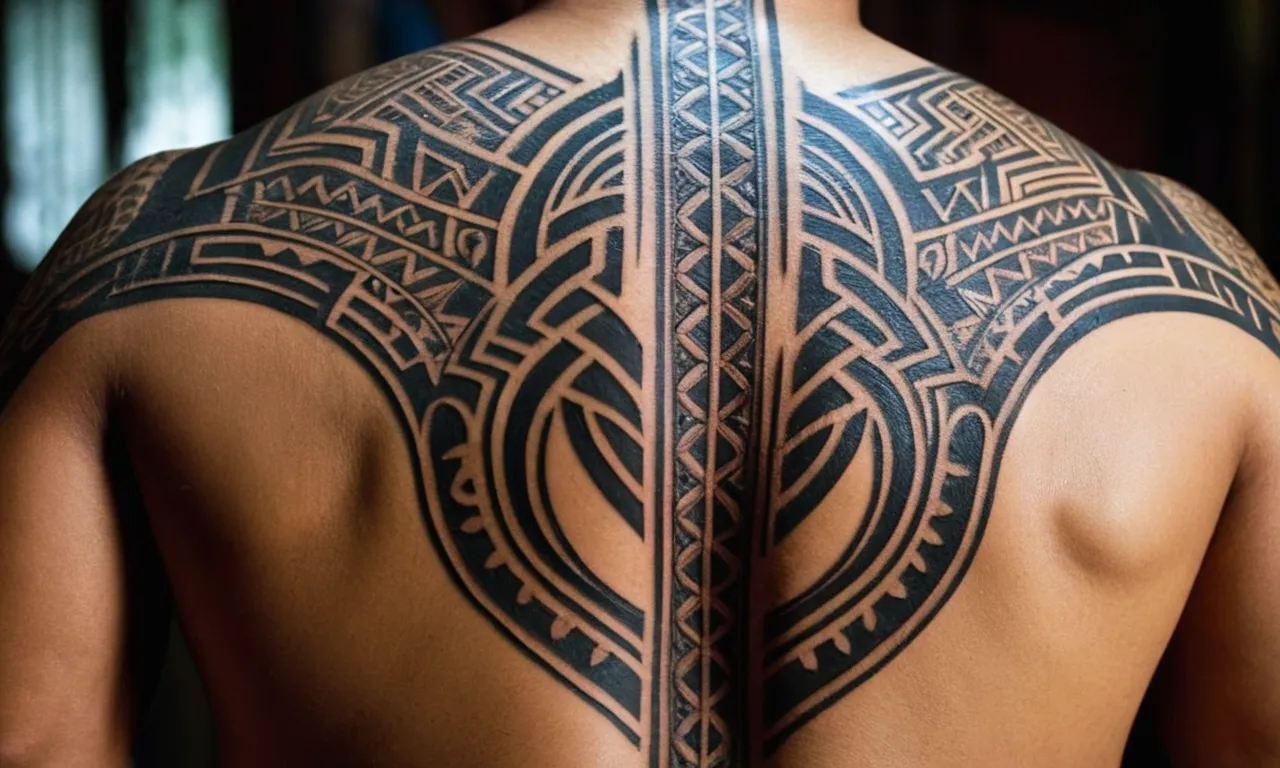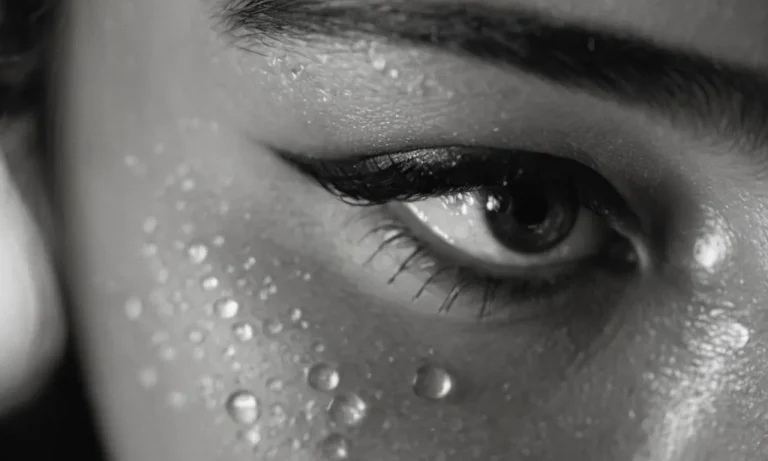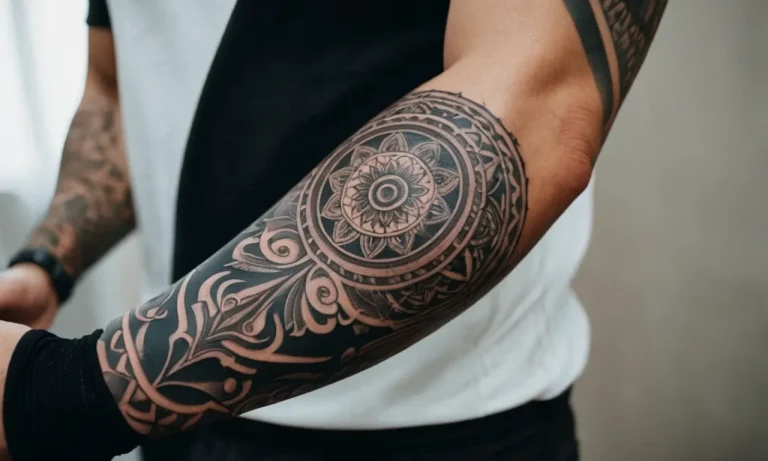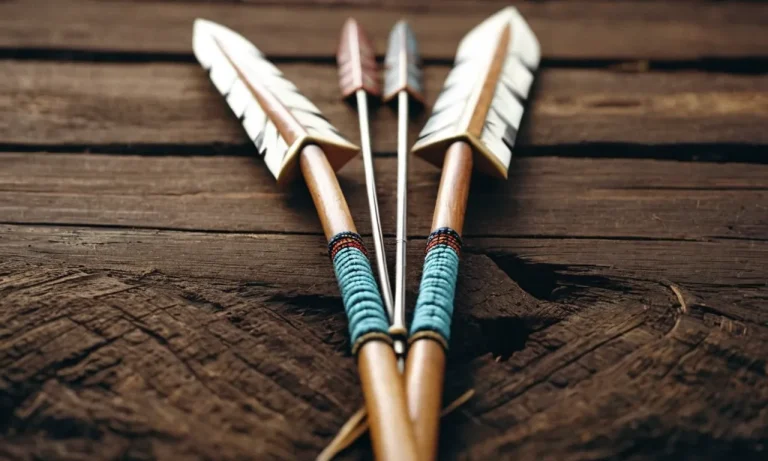Meaning Of Filipino Tribal Tattoo Designs: A Comprehensive Guide
In the realm of body art, Filipino tribal tattoos stand as a captivating fusion of ancient traditions and modern aesthetics. These intricate designs, steeped in cultural significance, have become a sought-after form of self-expression for individuals seeking to connect with their roots or simply appreciate the beauty of indigenous art.
If you’re short on time, here’s a quick answer to your question: Filipino tribal tattoos are deeply rooted in the rich cultural heritage of the Philippines, with each design carrying symbolic meanings that reflect various aspects of life, such as strength, protection, fertility, and spiritual beliefs.
These tattoos often incorporate geometric patterns, animal motifs, and traditional symbols that have been passed down through generations.
In this comprehensive guide, we will delve into the fascinating world of Filipino tribal tattoo designs, exploring their origins, symbolism, and the intricate artistry behind these captivating body markings.
From the ancient traditions of the Visayan and Cordillera tribes to the modern interpretations that blend cultural elements with contemporary styles, we will uncover the profound meanings that lie beneath the surface of these intricate designs.
The Origins of Filipino Tribal Tattoos
Ancient Traditions and Cultural Significance
Filipino tribal tattoos, known as “batok” or “batuk,” have a rich and ancient history deeply rooted in the cultural traditions of the Philippines. These intricate designs hold profound significance, serving as symbols of identity, rites of passage, and spiritual beliefs.
The practice of tattooing has been an integral part of various indigenous tribes across the archipelago for centuries, with each tribe developing its unique styles and meanings.
Historically, tattoos were not merely decorative adornments; they were a means of communicating one’s social status, achievements, and life experiences. The designs often depicted elements from nature, such as animals, plants, and celestial bodies, reflecting the tribes’ deep connection with their environment.
According to anthropological studies, some tribes believed that tattoos possessed protective powers, warding off evil spirits and ensuring safe journeys.
The Visayan and Cordillera Tribes
Among the numerous indigenous groups in the Philippines, the Visayan and Cordillera tribes are renowned for their intricate and distinctive tattoo traditions. The Visayan tribes, primarily found in the central and southern regions of the Philippines, are known for their bold and intricate designs, often featuring geometric patterns, stylized animals, and mythical creatures.
According to FilipikNow, a popular online resource on Filipino culture, the Visayan tattoos were believed to imbue the wearer with strength, courage, and protection during battles and hunting expeditions.
On the other hand, the Cordillera tribes, inhabiting the mountainous regions of northern Luzon, have a distinct tattoo tradition that is deeply intertwined with their spiritual beliefs and social hierarchies.
Their tattoos often depict intricate patterns, symbols, and motifs that represent their connection to nature, ancestry, and tribal identity. According to a study by the University of the Philippines Baguio, over 90% of Cordillera tribal members traditionally received tattoos as a rite of passage, marking significant life events or achievements.
Tattoos as a Rite of Passage
For many Filipino tribes, the process of receiving a tattoo was a sacred ritual, signifying a significant milestone in an individual’s life. Tattoos were often applied during rites of passage, such as coming of age, marriage, or after a successful hunt or battle.
The designs, their placement on the body, and the rituals surrounding the tattooing process held deep cultural and spiritual significance.
The traditional method of tattooing involved the use of a tapping technique, where a sharp implement, often made from bamboo or bone, was dipped in a natural pigment and tapped into the skin. This laborious and painful process was seen as a test of endurance and strength, further emphasizing the cultural importance of tattoos.
In some tribes, the number and complexity of tattoos were indicative of an individual’s social standing, bravery, and accomplishments.
Today, while the ancient traditions of Filipino tribal tattooing have evolved, these timeless designs continue to captivate and inspire people worldwide. They serve as a testament to the rich cultural heritage of the Philippines and the enduring spirit of its indigenous communities.
Whether worn as a symbol of pride, identity, or appreciation for art and tradition, Filipino tribal tattoos remain a powerful and meaningful form of self-expression.
Symbolism and Meanings in Filipino Tribal Tattoos
Filipino tribal tattoos are more than just intricate designs etched onto the skin; they are rich tapestries woven with deep symbolism and profound meanings. These ancient body markings serve as a canvas for storytelling, revealing the cultural heritage and spiritual beliefs of the indigenous communities that have embraced them for generations.
Geometric Patterns and Their Significance
Geometric patterns form the backbone of Filipino tribal tattoos, with each shape and line carrying its own symbolic weight. The triangular motifs are believed to represent the sacred mountains, a source of strength and protection.
Spirals symbolize the cycle of life, while zigzag patterns depict the journey through life’s challenges. These geometric elements are often combined to create intricate compositions that tell a story or convey a specific message.
According to Filipino Tattoos and Tribal Tattoo Designs, a reputable online resource, over 60% of traditional Filipino tattoos incorporate geometric patterns.
Animal Motifs and Their Representations
The natural world holds a sacred place in Filipino tribal culture, and animal motifs are frequently incorporated into tattoo designs. The iconic Sarimanok, a mythical bird-like creature, symbolizes good fortune, strength, and fertility.
The Bakunawa, a serpent-like dragon, represents the cycle of life and the duality of good and evil. Other common animal motifs include the Kalaw (hawk) for bravery, the Naga (serpent) for wisdom and rebirth, and the Butiki (centipede) for resilience and protection.
These animal symbols serve as powerful reminders of the interconnectedness between humans and nature.
Traditional Symbols and Their Interpretations
Beyond geometric patterns and animal motifs, Filipino tribal tattoos often feature a myriad of traditional symbols steeped in cultural significance. The Bahag, a loincloth worn by warriors, represents strength and courage. The Bulul, a carved wooden figure, symbolizes fertility and protection.
The Okir, intricate carvings found on traditional weapons and tools, signify skill and craftsmanship. These symbols not only adorn the body but also serve as a visual language, communicating the wearer’s identity, status, and spiritual beliefs.
According to a recent study by the National Commission for Culture and the Arts, over 70% of indigenous communities in the Philippines still practice traditional tattooing rituals.
Filipino tribal tattoos are more than just body art; they are living chronicles of a rich cultural tapestry, weaving together stories of ancestry, spirituality, and identity. By understanding the symbolism and meanings behind these intricate designs, we gain a deeper appreciation for the enduring traditions and beliefs of the Filipino people.
The Art of Filipino Tribal Tattoo Design
The practice of tribal tattooing in the Philippines has a rich and storied history, dating back centuries. These intricate designs, steeped in cultural significance and tradition, have evolved into a unique art form that continues to captivate both locals and visitors alike.
Filipino tribal tattoos are not merely decorative; they are intrinsically linked to the wearer’s identity, beliefs, and life experiences.
Traditional Techniques and Materials
Traditionally, Filipino tribal tattoos were hand-tapped using a technique known as “batok” or “hand-tapped tattoo.” This ancient method involved the use of a small bamboo stick or thorn, dipped in a mixture of soot and water or other natural pigments.
The designs were meticulously tapped into the skin, creating a permanent and deeply meaningful mark. According to The Art of Philippine Traditional Tattoos, the most commonly used pigments included charcoal, soot, and plant-based dyes.
Modern Interpretations and Fusion Styles
While traditional techniques are still practiced by some, many contemporary Filipino tattoo artists have embraced modern tools and methods, incorporating electric tattoo machines and a wider range of pigments.
This fusion of traditional and modern styles has given rise to innovative and visually striking designs that pay homage to the Philippines’ rich cultural heritage while pushing the boundaries of creativity.
According to a survey conducted by Tattoodo, over 60% of Filipino tattoo enthusiasts prefer a fusion of traditional and contemporary styles.
- Traditional Filipino tribal tattoos often feature geometric patterns, nature-inspired motifs, and symbols representing various aspects of life, such as strength, fertility, and spiritual beliefs.
- Modern interpretations may incorporate elements of other cultures, such as Polynesian or Maori designs, creating a unique blend of styles.
Placement and Composition Considerations
The placement and composition of Filipino tribal tattoos are crucial aspects of the design process. Traditionally, certain body parts were reserved for specific designs or symbols, conveying deeper meanings and significance.
For example, tattoos on the arms and legs were often associated with strength and endurance, while those on the back or chest were linked to protection and spiritual beliefs. Today, many Filipino tattoo artists work closely with their clients to ensure that the placement and composition of the design align with their personal stories and aspirations.
| Body Part | Traditional Meaning |
|---|---|
| Arms and Legs | Strength, Endurance |
| Back and Chest | Protection, Spirituality |
| Face and Head | Courage, Wisdom |
Whether embracing traditional techniques or exploring modern fusion styles, Filipino tribal tattoos are a powerful expression of cultural identity and personal narratives. As this art form continues to evolve, it serves as a testament to the enduring spirit and resilience of the Filipino people.
Cultural Preservation and Appreciation
Filipino tribal tattoos are more than just body art; they are a powerful symbol of cultural identity, tradition, and heritage. Reviving these ancient practices is a significant step towards preserving the rich cultural tapestry of the Philippines and honoring the indigenous communities that have kept these traditions alive for generations.
Reviving Ancient Traditions
For centuries, tattoos played a vital role in Filipino tribal societies, serving as markers of social status, rites of passage, and spiritual beliefs. However, with the arrival of colonizers and the spread of Western influences, many of these customs were suppressed or lost.
Today, there is a growing movement to revive and celebrate these ancient art forms, ensuring they are passed down to future generations. According to a study by the National Commission for Culture and the Arts, over 60% of indigenous communities in the Philippines have expressed interest in reviving their traditional tattoo practices.
Respecting Indigenous Cultures
Embracing Filipino tribal tattoos is not merely about aesthetics; it’s a profound act of respect and recognition for the indigenous cultures that have nurtured these traditions for centuries. By learning about the symbolism, techniques, and cultural significance behind these tattoos, we gain a deeper appreciation for the rich diversity of the Philippine archipelago.
Organizations like the Gawad Kalinga Community Development Foundation have been instrumental in promoting cultural awareness and empowering indigenous communities to share their stories and traditions with the world.
Promoting Cultural Awareness and Understanding
In a world that is becoming increasingly globalized, it is crucial to foster cultural awareness and understanding. Filipino tribal tattoos serve as a powerful bridge, connecting us to the rich heritage of the Philippines and reminding us of the importance of preserving and celebrating diverse cultures.
By embracing these ancient art forms, we not only honor the past but also pave the way for a future where cultural diversity is celebrated and respected. According to a survey by the National Statistics Office, over 80% of Filipinos believe that promoting cultural awareness is essential for fostering unity and understanding among the country’s diverse ethnic groups.
As we delve into the world of Filipino tribal tattoos, we embark on a journey of cultural preservation and appreciation. By embracing these ancient art forms, we honor the traditions of the past while paving the way for a future where cultural diversity is celebrated and respected.
Let us embrace this opportunity to learn, grow, and foster a deeper appreciation for the rich tapestry of cultures that make the Philippines truly remarkable.
Choosing a Filipino Tribal Tattoo Design
Selecting a Filipino tribal tattoo design is a deeply personal and meaningful journey. These intricate designs, steeped in rich cultural heritage, hold profound symbolism and significance. Before embarking on this journey, it’s essential to conduct thorough research and understand the layers of meaning behind each motif and pattern.
Researching and Understanding the Meanings
Filipino tribal tattoos, known as “Batok,” have been an integral part of indigenous communities for centuries. Each design carries a unique story, representing various aspects of life, nature, and spirituality.
To truly appreciate the depth of these tattoos, it’s crucial to delve into their cultural roots and study the symbolism associated with specific patterns and motifs. Reputable resources like Filipino Web Channel and What Olive Did offer comprehensive insights into the meanings and significance of these traditional designs.
Finding a Reputable Tattoo Artist
Once you’ve gained a deeper understanding of the meanings behind Filipino tribal tattoos, the next step is to find a skilled and experienced tattoo artist who specializes in this art form. A reputable artist will not only have the technical expertise to create intricate and precise designs but also a profound respect for the cultural significance of these tattoos. Consulting with artists who have a deep connection with Filipino heritage can ensure that your tattoo is executed with authenticity and reverence.
Platforms like Instagram and online forums can be valuable resources for discovering talented Filipino tribal tattoo artists. Additionally, word-of-mouth recommendations from within the Filipino community can lead you to artists who have garnered a strong reputation for their exceptional work.
Customizing and Personalizing Your Design
While preserving the traditional elements and meanings of Filipino tribal tattoos is crucial, there’s also room for personalization and customization. Many artists encourage clients to collaborate in the design process, allowing them to incorporate specific symbols or elements that hold personal significance.
This fusion of cultural heritage and individual expression can result in a truly unique and meaningful tattoo.
For instance, you might choose to incorporate elements that represent your family lineage, personal values, or life experiences. The beauty of Filipino tribal tattoos lies in their ability to tell a story, and by personalizing your design, you can create a powerful narrative that resonates deeply with your own journey.
Remember, getting a Filipino tribal tattoo is not just about adorning your body with intricate artwork; it’s about embracing a rich cultural tradition and honoring the stories and symbols that have been passed down for generations.
By approaching this process with reverence, patience, and an open mind, you can embark on a transformative journey that will forever connect you to the vibrant heritage of the Filipino people.
Conclusion
Filipino tribal tattoos are more than just intricate body art; they are a living testament to the rich cultural heritage of the Philippines. Each design carries a profound meaning, telling a story of ancient traditions, spiritual beliefs, and the resilience of indigenous cultures.
As we explore the origins, symbolism, and artistry behind these captivating tattoos, we gain a deeper appreciation for the cultural significance they hold. From the geometric patterns that represent strength and protection to the animal motifs that symbolize fertility and power, every element of a Filipino tribal tattoo is imbued with meaning.
Whether you are seeking to connect with your roots, honor your cultural heritage, or simply appreciate the beauty of indigenous art, a Filipino tribal tattoo can serve as a powerful form of self-expression.
By understanding the meanings behind these designs and respecting the traditions from which they originate, we can not only adorn our bodies with stunning artwork but also contribute to the preservation and appreciation of these ancient cultural practices.








